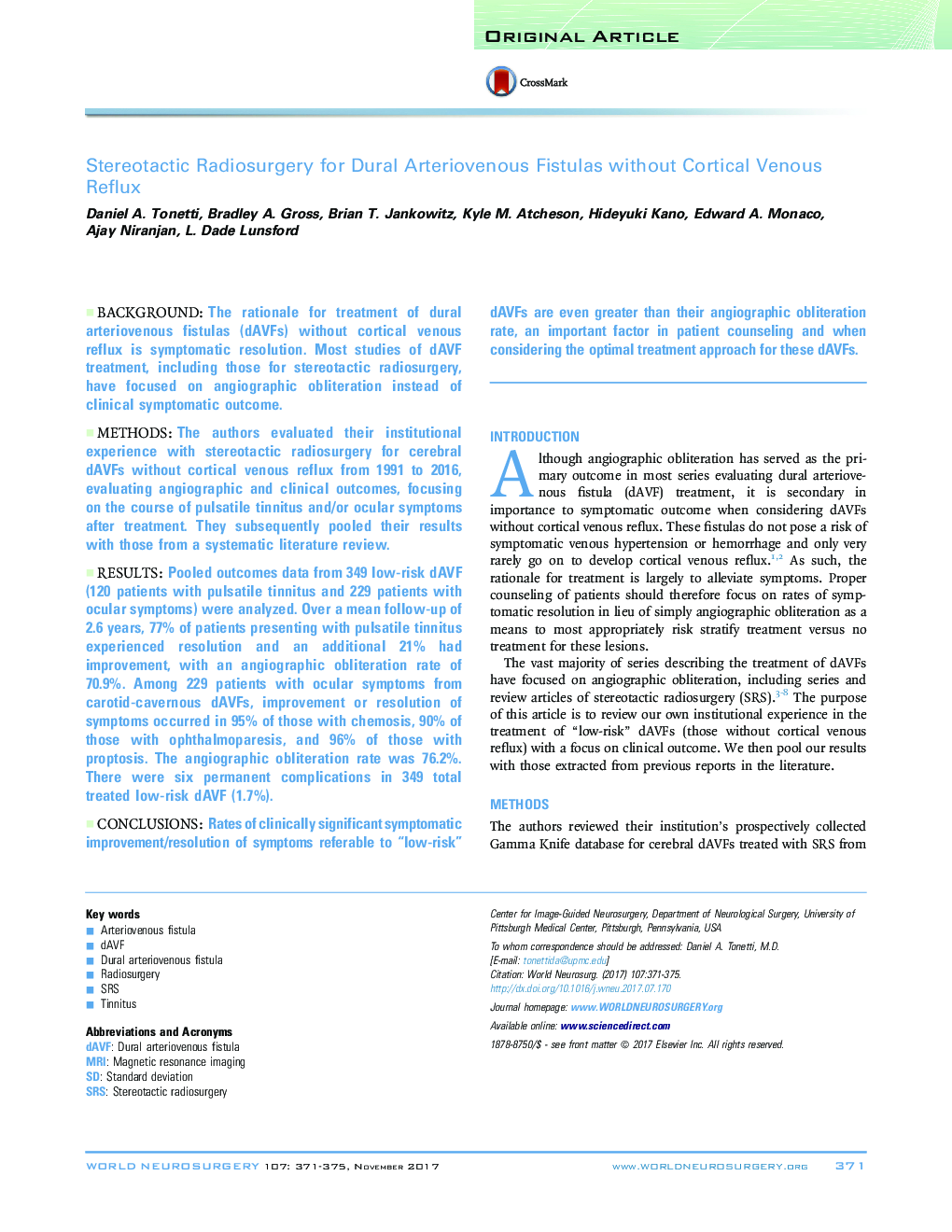| Article ID | Journal | Published Year | Pages | File Type |
|---|---|---|---|---|
| 5633894 | World Neurosurgery | 2017 | 5 Pages |
BackgroundThe rationale for treatment of dural arteriovenous fistulas (dAVFs) without cortical venous reflux is symptomatic resolution. Most studies of dAVF treatment, including those for stereotactic radiosurgery, have focused on angiographic obliteration instead of clinical symptomatic outcome.MethodsThe authors evaluated their institutional experience with stereotactic radiosurgery for cerebral dAVFs without cortical venous reflux from 1991 to 2016, evaluating angiographic and clinical outcomes, focusing on the course of pulsatile tinnitus and/or ocular symptoms after treatment. They subsequently pooled their results with those from a systematic literature review.ResultsPooled outcomes data from 349 low-risk dAVF (120 patients with pulsatile tinnitus and 229 patients with ocular symptoms) were analyzed. Over a mean follow-up of 2.6 years, 77% of patients presenting with pulsatile tinnitus experienced resolution and an additional 21% had improvement, with an angiographic obliteration rate of 70.9%. Among 229 patients with ocular symptoms from carotid-cavernous dAVFs, improvement or resolution of symptoms occurred in 95% of those with chemosis, 90% of those with ophthalmoparesis, and 96% of those with proptosis. The angiographic obliteration rate was 76.2%. There were six permanent complications in 349 total treated low-risk dAVF (1.7%).ConclusionsRates of clinically significant symptomatic improvement/resolution of symptoms referable to “low-risk” dAVFs are even greater than their angiographic obliteration rate, an important factor in patient counseling and when considering the optimal treatment approach for these dAVFs.
